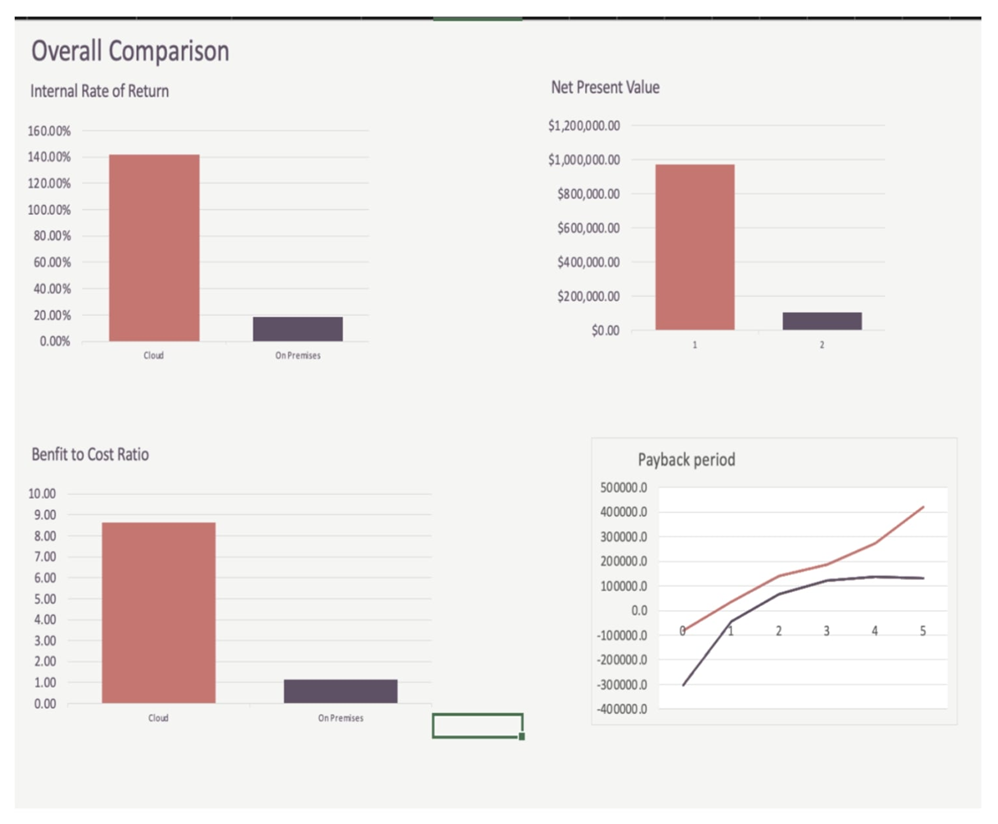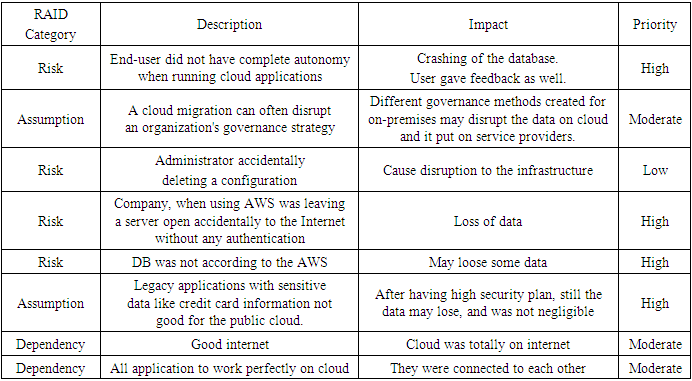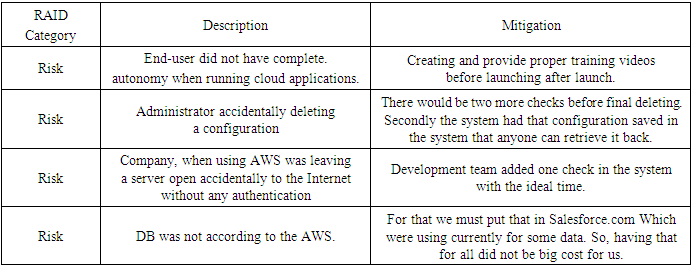-
Paper Information
- Paper Submission
-
Journal Information
- About This Journal
- Editorial Board
- Current Issue
- Archive
- Author Guidelines
- Contact Us
Computer Science and Engineering
p-ISSN: 2163-1484 e-ISSN: 2163-1492
2024; 14(1): 1-6
doi:10.5923/j.computer.20241401.01
Received: Feb. 2, 2024; Accepted: Feb. 25, 2024; Published: Feb. 27, 2024

Cloud Migration Strategy for Project Management
Falguni Mehrotra
EMEM, Saint Cloud State University, Minnesota, USA
Correspondence to: Falguni Mehrotra, EMEM, Saint Cloud State University, Minnesota, USA.
| Email: |  |
Copyright © 2024 The Author(s). Published by Scientific & Academic Publishing.
This work is licensed under the Creative Commons Attribution International License (CC BY).
http://creativecommons.org/licenses/by/4.0/

Legacy system migration to the cloud brings both great challenges and benefits, so there exist various academic research and industrial applications on legacy system migration to the cloud. By analyzing the research achievements and application status, the division of existing migration methods into three strategies according to the cloud service models integrally was done. Different processes need to be considered for different migration strategies and different tasks were involved accordingly. The similarities and differences between the migration strategies are discussed, and the challenges and future work about legacy system migration to the cloud were proposed. The aim of this paper is to provide an overall presentation for legacy system migration to the cloud and identify important challenges and future research directions.
Keywords: Legacy System, Cloud Migration, Project Management, Healthcare system
Cite this paper: Falguni Mehrotra, Cloud Migration Strategy for Project Management, Computer Science and Engineering, Vol. 14 No. 1, 2024, pp. 1-6. doi: 10.5923/j.computer.20241401.01.
Article Outline
1. Introduction
- Healthcare company managed patients’ data and got the medical claims from different hospitals, pharmacy etc. and the company process the same claims using different portals and application and provide the satisfactory service to the customer. Cloud computing in healthcare firm was a network of servers that were placed over the Internet which helps in storing, processing, and managing the patients and claims data instead of processing data over local servers or computers. For cloud computing technology, cloud migration strategy came in picture which helps organization to understand the impact. Healthcare firm was boosting their business with cloud computing by migrating their applications on cloud. Technically, cloud migration was a process of moving data, applications, business processes and environments from on-premises IT infrastructure to the cloud infrastructure. To make the cloud migration journey successful and stress-free for the organization, there were certain strategies that enable data and applications to be accessed on demand from anywhere and anytime which saves the computing cost and hence increases innovation.
2. Background Review
- While working with NewYork state government, healthcare department. The state government maintains all the clinical data of the patient and consumers of newyork state. They also help people in in getting Medicaid, Mediclaim, CHIP etc. card. People can check for their eligibility. The company was also involved in keeping and maintaining the immunization record. Health Insurance Company was the name of one of their products, of which I was the product owner. Health Insurance Company was a web and mobile based application that maintains all the clinical data of the patients. It’s an EHR system (Acumen), which can handle thousands of patients and customers. The system manages patient information, securely interchange information with LIS system, PIS and manage drugs, billing etc. They sought an affordable, easy-to-manage, and easy-to-deploy solution that would scale to fit their customers’ changing needs while keeping patient data secure and available, keeping security and availability as priorities. All data was in on premises database and the server were also in the organization premises. Everything was managed from their on-premises data center. When there was increase in technology and digital transformation awareness, more people start using the web based and mobile application. There was some limitation with the server that it couldn’t handle loads more than 100 million. Users exceeded to 80 million and this get broke the system. This leads to the downtime of the datacenter. This caused loss of the consumer and some crucial clinical data. This stopped the whole data transfer of the system. This happened during pandemic also and thus the on-premises data was not that much mature to handle the load.The use of on premises data was now considered to be the least priority over the cloud as cloud was more scalable, cost effective, ameliorate and highly flexible [1]. The only problem that organizations were facing on migration to cloud technologies was the strategy to migrate. In 2009, Companies like IBM, Nationwide tried to migrate their data and applications on cloud but failed as they were not able to understand complex cloud computing structure which comprises public, private and hybrid infrastructures. As per CDW 2013 State of the Cloud, 46% of executives faced security challenges. For IDC 3% of executives consider cloud strategies to be optimized [2].Capgemini also faced the issue with their needs while working on a premises database, and they thought of hosting the application to the cloud. Capgemini’ recently on Nov 18, 2020, introduced the Cloud Now methodology and EZTrans solutions that helped them to rollover the application to get onto Oracle Cloud fast. But the strategy won’t work for all the applications [3]. Another note on Oct 26, 2020, by Donald Farmer, a strategic adviser to software vendors and enterprises on data and analytics. Digital transformation without the cloud was not impossible but it’s very limited in scope. Really, if you want to get the best advantage from your digital transformation, cloud has to be an important element of that [4].AWS migration found the opportunity to come up with transformation plan to implement your cloud strategy. AWS analyzed the current state, built a plan, and iterate the work into manageable activities for efficient migration. [5] The come up with the plan in which organization look their own environment through the different Perspectives Business, People, Governance, Platform, Security, and Operations [6].
 | Figure 1. Phases of cloud migration [7] |
3. Cloud Migration Startegy
- Cloud migration methodology includes all the steps and methods to achieve business and technical goals of a healthcare organization. Figure 2 shows cloud migration methodology.
 | Figure 2. Cloud Migration Methodology |
4. Risk Analysis and Mitigation
- Discuss how the healthcare systems' existing infrastructure can accommodate cloud technology, assess potential migration risks like data breaches or compliance issues, and conduct a cost-benefit analysis to weigh the financial implications against the expected improvements in service delivery and operational efficiency. Discuss how the healthcare systems' existing infrastructure can accommodate cloud technology, assess potential migration risks like data breaches or compliance issues, and conduct a cost-benefit analysis to weigh the financial implications against the expected improvements in service delivery and operational efficiency.
4.1. Risk Analysis and Assessment
- Every action or solution came with a risk. Author connected with the team and come up with Risk Management Plan as mentioned below.
|
4.2. Risk Assessment Matrix
- Author researched more and figure out the mitigation for the above-mentioned risks. After the finding it was clear that all the risk has the solution to it and was not a blocker for cloud migration.
|
4.3. Risk Mitigation
- Author researched more and figure out the mitigation for the above-mentioned risks. After the finding it was clear that all the risk has the solution to it and was not a blocker for cloud migration.
|
5. Cost and Economic Analysis
- Author connected with marketing and financial team to figure out the cost of the services selected i.e., AWS Lambda and AWS Database Migration Service. Here was the cost structure. illustrated in below example.
 | Figure 3 |
6. Business Value
- Another major component which was an important deciding factor for cloud migration.Generally, people leave this pointer while considering the migration. This factor told us what the business value that you earned by moving to the cloud. Here was some business value researched by author in this project.• Business agility – The major cost saved was the deployment cost. Deployment of Health Insurance Company on on-premises database cost around 15% of the TCO. While in cloud it updates automatically using technique CI/CD.• Workforce Productivity – As everything moved to the cloud so there be no extra resource cost. Company saves approximately 15% of cost. All resources moved to research and development team for innovation and business expansion.• Operational resilience – Cloud migration decreases the downtime and that actually saved 8% of the cost and increased the benefits by 5% because of high data security.• Performance – Performance of Health Insurance Company has increased in following areaso User experience by decrease in Page load time, response time, session duration.o Application performance by less error rates and more throughput and availability.o Infrastructure performance with better CPU usage %, disk performance and memory usage.o Business metrics, with less bounce rates and dwell time, conversion rates and engagement rates.
7. Result for Healthcare Migration
- After analyzing and researching author came up with the results that give the profit to the whole company and as well as to the project. This project gave the better exposure to the end users as well. The results for the whole migration stated as• Migrate – Yes, it’s good decision to migrate Health Insurance Company on the cloud and host all three applications.• Cloud environment / the deployment model – As all the three applications were linked to each other and we need the large and flexible storage, the model chosen was Public model.• Strategy – As Health Insurance Company was an EHR, and most of the data has been managed over salesforce so it was easy to deploy over AWS.• AWS Service - Lambda and AWS data migration, these services have all the benefits and features that was needed.• Pricing – Pay per use.So, through the whole research was able to answer the questions that author has state at the first.• How many applications has been moved to cloud and how much cost has been saved by healthcare after migration?Answer – For one application company saved = $262,836.85 - $219,764.63 = $43,072.22.Total migrated application was 23 including databases, the saved cost was approx. = $43,072.22*23 = $990,661.12 in 5 years.• How much cloud migration leads to growth in customer acquisition and satisfaction?Answer – As there were, 770 customers more after the 5th year and 600 customers retained.Here was the graph that shows the exact comparison.
8. Conclusions
- Legacy system migration to the cloud is a complex yet essential journey marked by both challenges and benefits. Through an analysis of academic research and industrial applications, this paper categorizes migration methods into three strategies aligned with cloud service models. The nuanced exploration of these strategies reveals their similarities, differences, and implications for diverse organizational needs. As organizations embark on this transformative path, they must address security concerns, compatibility issues, and integration challenges. Looking forward, addressing these challenges presents opportunities for future research, fostering innovative solutions to optimize the migration process. This paper contributes to a comprehensive understanding of legacy system migration, guiding stakeholders in making informed decisions for a successful transition to the cloud.
 Abstract
Abstract Reference
Reference Full-Text PDF
Full-Text PDF Full-text HTML
Full-text HTML

